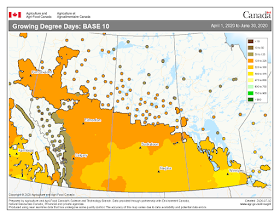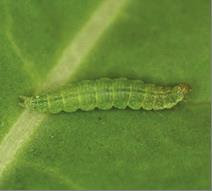In memory
John Frederick Doane quietly passed away on May 21, 2020, in his home in Saskatoon, at the age of 90 years. Having grown up on a farm north of Toronto, John developed an interest in entomology at a young age, and began collecting insect specimens common to southern Ontario. John received his B.S.A. in 1954 from the Ontario Agricultural College, now the University of Guelph; specializing in entomology. Pursuing these interests, John immediately enrolled in graduate studies at the University of Wisconsin, completing both his M.Sc. (1956) and his Ph.D. (1958). Shortly after graduating, he began a research career in agricultural entomology, receiving an Research Scientist position at the Agriculture Canada Research Station in Saskatoon that same year. Interestingly, this cadre of Research Scientists at the Centre still had a significant number of first generation entomologists appointed to the Dominion Entomological Laboratory at Saskatoon.
 |
John Frederick Doane (14 April 1930 - 21 May 2020)
Photo taken July 2019 |
John adapted very quickly to the agricultural industry on the prairies, and his research over the years has significantly contributed to insect population monitoring. His first research assignment was to assess and describe the ecology and behaviour of wireworms, a major pest of field crops at the time. John began by investigating the ovipositional behaviour and fecundity of adults, as well as the effects of soil moisture and temperature on wireworm egg survival. His studies, related to the response of wireworm larvae to carbon dioxide levels, contributed to the development of trapping and monitoring tools for larval populations. In the early 1980s, Saskatchewan experienced an unexpected outbreak of wheat midge (
Sitodiplosis mosellana). John was asked to assemble a multidisciplinary research team with the objectives to determine the biology and ecology of this new threat to wheat production in the prairies. His research promptly yielded important contributions: (i) the discovery of a significant biological control insect (
Macroglenes penetrans), and (ii) the development of a sound wheat midge population monitoring protocol. Through the successful implementation of conservation techniques,
M. penetrans now controls an average of >30% of the wheat midge across Saskatchewan annually. A study in the 1990s, showed that the dollar value of the parasitoid to the agriculture industry over the 10 years, was in excess of $248.3 million (equivalent of $422.5 million today). The second highlight, a soil extraction protocol for wheat midge larval cocoons, provided a unique population density and distribution monitoring tool for both the pest wheat midge and it’s biological control agent. This tool is still utilized today to forecast the risk to wheat production; the survey results being provided as mapped forecasts for producers on an annual basis. Given the success of biological control agent (
M. penetrans), John collaborated with international colleagues at CABI in Switzerland, to assess the viability of importing a second biocontrol agent for control of wheat midge. This resulted in the successful introduction and establishment of
Platygaster tuberosula. In the late 1980s, wheat production south of the USA border was seriously threatened by Russian wheat aphid (
Diuraphis noxia). In response to this new threat, John manufactured and installed a series of suction traps as an early-warning system, from southern to northern Saskatchewan. The 30ft high traps were designed to collect migratory aphid adults being transported north on wind currents from infestations in the USA. The results indicated that southwest SK was occasionally at low risk, but the threat was significantly less than south of the border.
John was appointed Head of the Integrated Pest Management Section of the Saskatoon Research Station in 1982, and the Head of the amalgamated Cereals Protection Section in 1989. John served as E.S.S. President in 1967 and 1978, and served a term as a member of the E.S.C. Governing Board. He will also be remembered as a founding member of the national AAFC Biological Control Working Group, a group that is still very active in 2020. He retired in 1993, taking an extended self-guided tour of south east Asia, including India and Malaysia. Upon his return, John remained active in retirement, co-authoring several scientific articles, most recently a bio-climate modelling paper on wheat midge in 2020.
- Submitted by O. Olfert


































